Audi Q8 e-tron vs Volvo EX90 – Performance, range & efficiency compared
Compare performance, boot capacity, efficiency and price at a glance.
Find out which car is the better choice for you – Audi Q8 e-tron or Volvo EX90?
Costs and Efficiency: When it comes to price and running costs, the biggest differences usually appear. This is often where you see which car fits your budget better in the long run.
Audi Q8 e-tron has a a bit advantage in terms of price – it starts at 65100 £, while the Volvo EX90 costs 73700 £. That’s a price difference of around 8648 £.
In terms of energy consumption, the advantage goes to the Volvo EX90: with 17.80 kWh per 100 km, it’s somewhat more efficient than the Audi Q8 e-tron with 19.70 kWh. That’s a difference of about 1.90 kWh.
As for range, the Volvo EX90 performs minimal better – achieving up to 620 km, about 25 km more than the Audi Q8 e-tron.
Engine and Performance: Under the bonnet, it becomes clear which model is tuned for sportiness and which one takes the lead when you hit the accelerator.
When it comes to engine power, the Volvo EX90 has a evident edge – offering 680 HP compared to 503 HP. That’s roughly 177 HP more horsepower.
In acceleration from 0 to 100 km/h, the Volvo EX90 is slight quicker – completing the sprint in 4.20 s, while the Audi Q8 e-tron takes 4.50 s. That’s about 0.30 s faster.
In terms of top speed, the Audi Q8 e-tron performs slightly better – reaching 210 km/h, while the Volvo EX90 tops out at 180 km/h. The difference is around 30 km/h.
There’s also a difference in torque: Audi Q8 e-tron pulls to a small extent stronger with 973 Nm compared to 870 Nm. That’s about 103 Nm difference.
Space and Everyday Use: Beyond pure performance, interior space and usability matter most in daily life. This is where you see which car is more practical and versatile.
Seats: Volvo EX90 offers clearly perceptible more seating capacity – 7 vs 5.
In curb weight, Volvo EX90 is slight lighter – 2556 kg compared to 2585 kg. The difference is around 29 kg.
In terms of boot space, the Audi Q8 e-tron offers significantly more room – 569 L compared to 324 L. That’s a difference of about 245 L.
In maximum load capacity, the Volvo EX90 performs clearly perceptible better – up to 2135 L, which is about 498 L more than the Audi Q8 e-tron.
When it comes to payload, Audi Q8 e-tron minimal takes the win – 595 kg compared to 585 kg. That’s a difference of about 10 kg.
Who comes out on top?
Overall, the Volvo EX90 shows itself to be wins solidly and secures the title of DriveDuel Champion.
It convinces with the more balanced overall package and proves to be the more versatile choice for everyday use.
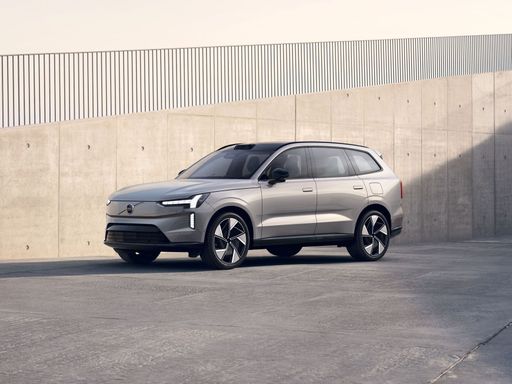
Volvo EX90
Audi Q8 e-tron
The Q8 e-tron stands out with its striking design and luxurious interior, offering a seamless blend of sophistication and cutting-edge technology. This all-electric SUV not only promises an exhilarating driving experience but also emphasizes sustainability without compromising on performance. With its spacious cabin and advanced infotainment features, the Q8 e-tron is sure to appeal to those seeking both comfort and efficiency in their next vehicle.
details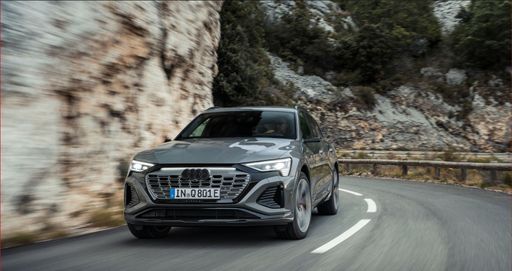 @ Audi
@ Audi
 @ Audi
@ Audi
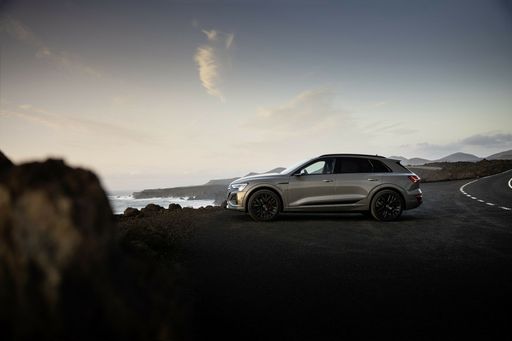 @ Audi
@ Audi
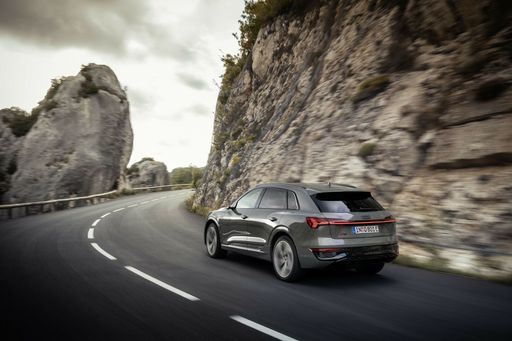 @ Audi
@ Audi
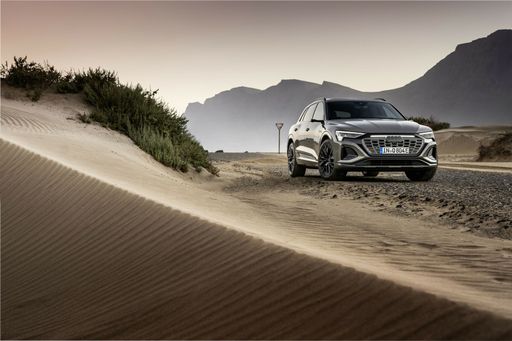 @ Audi
@ Audi
 @ Audi
@ Audi
 @ Audi
@ Audi
Volvo EX90
The Volvo EX90 represents a new era of luxury electric vehicles, combining sophisticated design with cutting-edge technology. Its interior offers a serene environment, enhanced by premium materials and a state-of-the-art infotainment system that ensures both comfort and connectivity. Safety remains paramount, with the EX90 featuring advanced driver assistance features to provide peace of mind on every journey.
details @ media.volvocars.com
@ media.volvocars.com
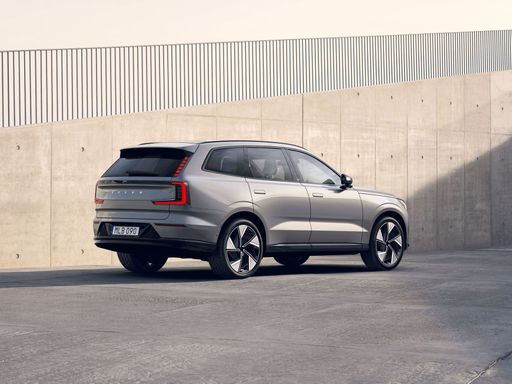 @ media.volvocars.com
@ media.volvocars.com
 @ media.volvocars.com
@ media.volvocars.com
 @ media.volvocars.com
@ media.volvocars.com
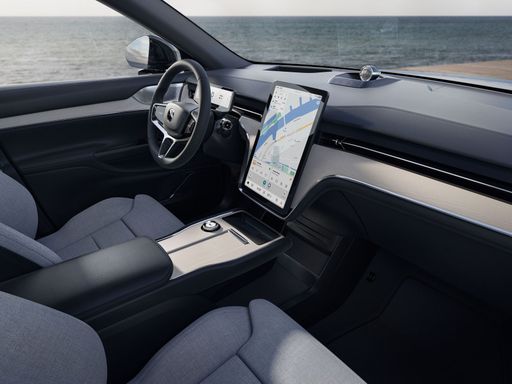 @ media.volvocars.com
@ media.volvocars.com
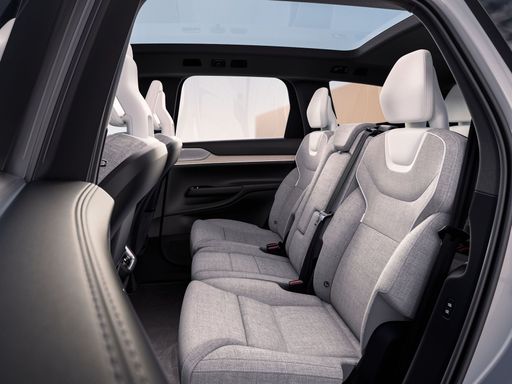 @ media.volvocars.com
@ media.volvocars.com

|

|
|
|
|
Costs and Consumption |
|
|---|---|
|
Price
65100 - 102800 £
|
Price
73700 - 94100 £
|
|
Consumption L/100km
-
|
Consumption L/100km
-
|
|
Consumption kWh/100km
19.7 - 26.3 kWh
|
Consumption kWh/100km
17.8 - 19.3 kWh
|
|
Electric Range
456 - 595 km
|
Electric Range
570 - 620 km
|
|
Battery Capacity
89 - 106 kWh
|
Battery Capacity
88 - 102 kWh
|
|
co2
0 g/km
|
co2
0 g/km
|
|
Fuel tank capacity
-
|
Fuel tank capacity
-
|
Dimensions and Body |
|
|---|---|
|
Body Type
SUV
|
Body Type
SUV
|
|
Seats
5
|
Seats
6 - 7
|
|
Doors
5
|
Doors
5
|
|
Curb weight
2585 - 2725 kg
|
Curb weight
2556 - 2764 kg
|
|
Trunk capacity
528 - 569 L
|
Trunk capacity
324 L
|
|
Length
4915 mm
|
Length
5037 mm
|
|
Width
1937 - 1994 mm
|
Width
1964 mm
|
|
Height
1617 - 1683 mm
|
Height
1744 mm
|
|
Max trunk capacity
1567 - 1637 L
|
Max trunk capacity
2082 - 2135 L
|
|
Payload
515 - 595 kg
|
Payload
375 - 585 kg
|
Engine and Performance |
|
|---|---|
|
Engine Type
Electric
|
Engine Type
Electric
|
|
Transmission
Automatic
|
Transmission
Automatic
|
|
Transmission Detail
Reduction Gearbox
|
Transmission Detail
Reduction Gearbox
|
|
Drive Type
All-Wheel Drive
|
Drive Type
Rear-Wheel Drive, All-Wheel Drive
|
|
Power HP
340 - 503 HP
|
Power HP
333 - 680 HP
|
|
Acceleration 0-100km/h
4.5 - 6 s
|
Acceleration 0-100km/h
4.2 - 6.8 s
|
|
Max Speed
200 - 210 km/h
|
Max Speed
180 km/h
|
|
Torque
664 - 973 Nm
|
Torque
480 - 870 Nm
|
|
Number of Cylinders
-
|
Number of Cylinders
-
|
|
Power kW
250 - 370 kW
|
Power kW
245 - 500 kW
|
|
Engine capacity
-
|
Engine capacity
-
|
General |
|
|---|---|
|
Model Year
2023 - 2024
|
Model Year
2025
|
|
CO2 Efficiency Class
A
|
CO2 Efficiency Class
A
|
|
Brand
Audi
|
Brand
Volvo
|
What drive types are available for the Audi Q8 e-tron?
The Audi Q8 e-tron is offered with All-Wheel Drive.
The prices and data displayed are estimates based on German list prices and may vary by country. This information is not legally binding.
